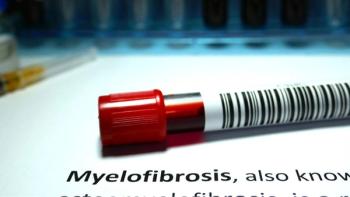
Molecular Subtype Proves to Be Prognostic Factor in Newly Diagnosed Gliomas
This reanalysis confirmed that there is no difference for a radiotherapy-first versus a chemotherapy-first strategy in this setting, but there is a major difference in long-term outcomes for molecular stratification independent of treatment.
Molecular subtype is a critical prognostic factor in newly diagnosed gliomas, according to a reanalysis of a previously reported, negative phase 3 therapeutic trial. This reanalysis1 confirmed that there is no difference for a radiotherapy-first versus a chemotherapy-first strategy in this setting, but there is a major difference in long-term outcomes for molecular stratification independent of treatment. These data were presented at the 2015 annual meeting of the American Society of Clinical Oncology (ASCO), a gathering of nearly 30,000 oncology professionals.
Results of the trial, NOA-04,2 were published several years ago. The trial hypothesis was that chemotherapy after resection of newly diagnosed anaplastic gliomas would provide a longer time to treatment failure (TTF) than radiotherapy after resection. No difference was seen. In the new analysis looking for differences by histological and molecular subgroups, outcomes differed markedly by molecular status even though outcomes did not differ by treatment.
“The molecular profile — and this is a major finding from the trial — is superior to histology in terms of clinical relevance,” reported Wolfgang Wick, chairman, Department of Neurooncology, Heidelberg University Hospital, Heidelberg, Germany. The differences were particularly pronounced for CpG island methylater phenotype (CIMP)-positive tumors with 1p/19q codelation (CIMP-codel) relative to CIMP non-codel or CIMP-negative tumors.
In the NOA-04 study, 318 patients with newly diagnosed anaplastic gliomas (either pure anaplastic astrocytomas or mixed anaplastic oligodendrogliomas or oligoastrocytomas) were randomly assigned to one of three initial therapies: 1) radiotherapy; 2) temozolomide; or 3) procarbazine, lomustine (CCNU) and vincristine (PCV). Upon progression or unacceptable toxicity, each of the arms was subsequently randomized to a therapy not yet received. The primary endpoint was time to treatment failure (TTF).
As reported previously, the choice of initial therapy did not translate into significant differences for the primary TTF endpoint, progression-free survival (PFS), or overall survival (OS). It was noted, however, that extent of resection was an important prognosticator in all three arms.
In the reevaluated data presented at ASCO, there was no change in this overall conclusion, but differences in outcome were observed when patients were stratified by molecular subtype as expressed by IDH1 gene status. These differences were observed independent of glioma histology. The shortest TTF was observed in IDH1 wildtype tumors, which are CIMP-negative. In these, median TTF was 1.5 years for those initially randomized to radiotherapy and 1.2 years for those initially randomized to either of the chemotherapy arms (which were combined for this analysis). No difference was significant.
In patients with IDH1-mutated, CIMP-positive tumors, outcomes were better than or relative to those with wildtype tumors, but the outcome advantage was greatest, independent of initial treatment assignment, for those with 1p/19q codeletion. In patients with non-codel IDH1 mutated tumors, median TTF climbed to nearly 4.5 years, but in the patients with 1p/19q tumors, the median TTF climbed to nearly 10 years.
These outcome advantages in the patients with 1p/19q relative to those with wildtype or non-codel tumors were also seen for PFS and OS. For OS, the median was less than five years in patients with CIMP-negative, IDH1 wildtype tumors; approximately seven years for those with non-codel IDH1 mutated tumors; but not yet reached for patients with the 1p/19 q tumors after a median of 9.5 years of follow-up.
These differences are critically important in considering the prognosis of anaplastic gliomas as well as for planning trials to test therapeutic strategies, according to Wick. He mentioned other clinical trials, such as RTOG 0425, which have also suggested that molecular subtype is a far more important prognostic indicator than histology.
For the 1p/19q molecular profile, “We are really talking about a totally different disease,” Wick said. On the basis of these data, he believes “We should be grouping these glioma patients according to their molecular features.”
References
- Wick W, Roth P, Wiestler B, et al. Long-term analysis of the NOA-04 randomized phase III trial of sequential radiochemotherapy of anaplastic glioma with PCV or temozolomide. J Clin Oncol 33, 2015 (suppl; abstr 2001).
- Wick W, Hartmann C, Engel C, et al. NOA-04 randomized phase III trial of sequential radiochemotherapy of anaplastic glioma with procarbazine, lomustine, and vincristine or temozolomide. J Clin Oncol 2009;27:5874-5880.




